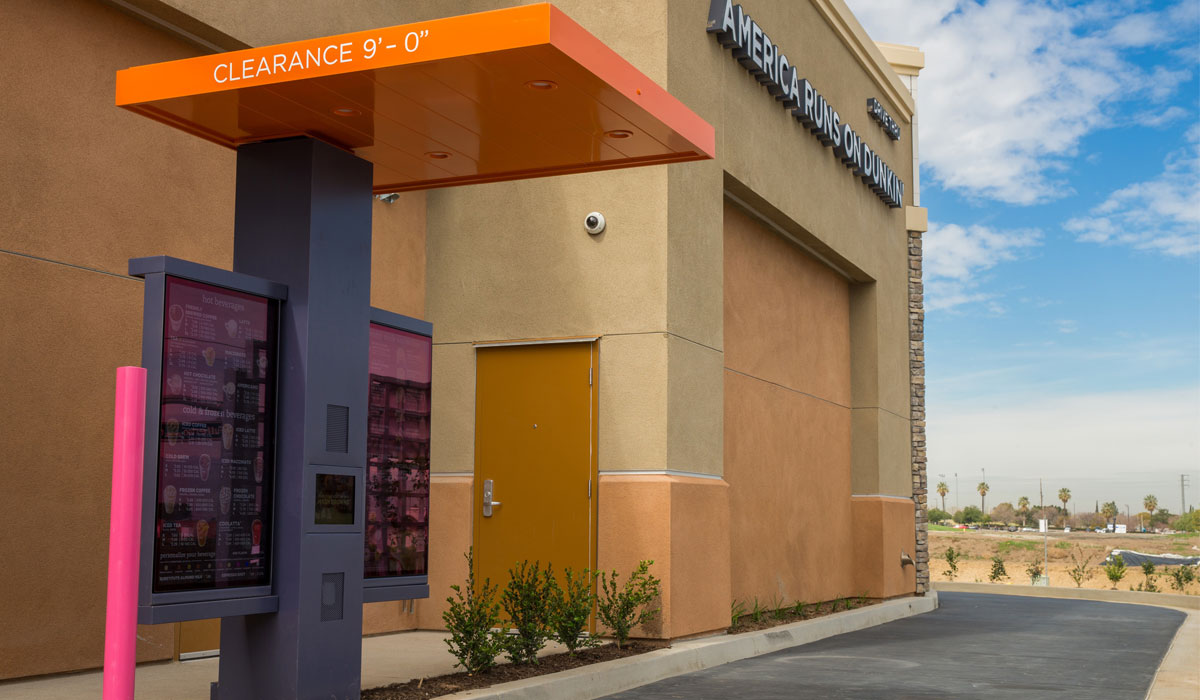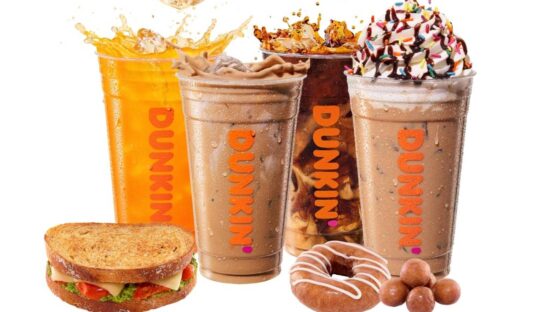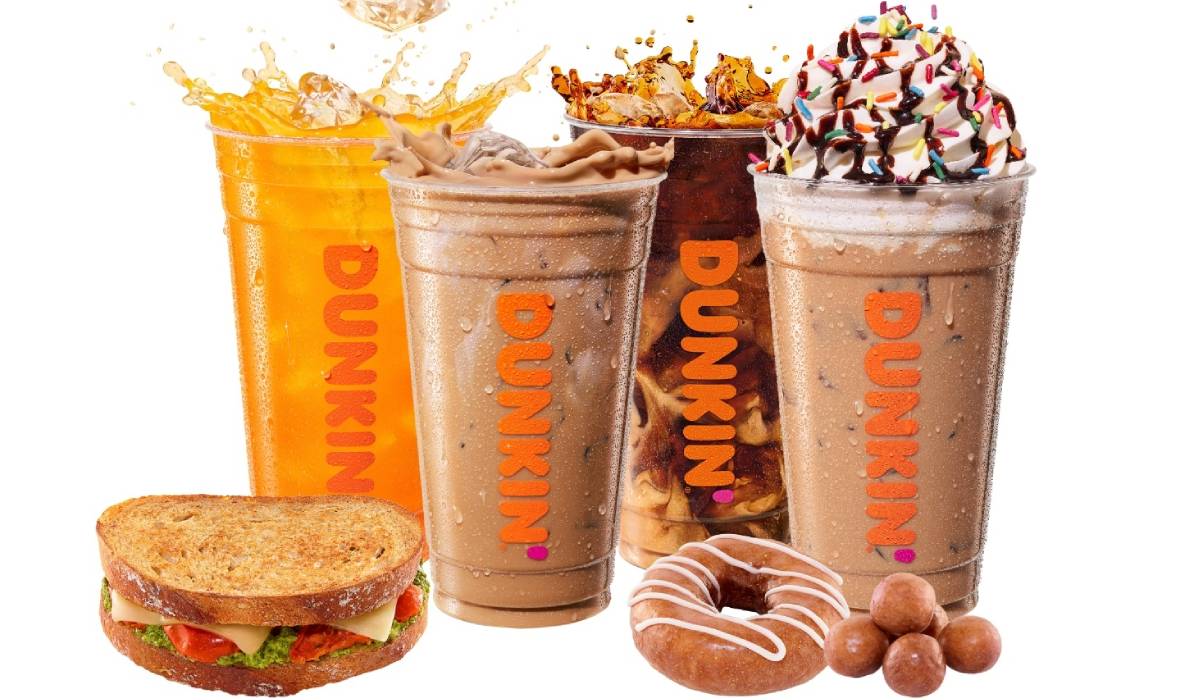Dunkin’ Brands CEO Dave Hoffmann said the chain is working through three phases as it navigates the pandemic—running, working, and recovery.
Running references the brand’s leverage of digital platforms and menu evolution to provide convenience and accessibility. The working phase includes the hiring of 25,000 new employees, the avoidance of corporate furloughs, and a new program that allows workers to receive a low-cost college degree.
However, the most notable phase will be recovery. Because within that pillar, Dunkin’ plans to close as many as 800 U.S. and 350 international stores. The domestic total includes the shuttering of 450 Speedway units announced earlier in the year.
For U.S. stores, this means locations that have low average weekly sales, cannot support beverage innovation or a NextGen remodel, and are situated in areas where traffic has changed and they can’t be relocated or add a drive-thru. Hoffmann said that for Baskin-Robbins, the closures are a continuation of its “raising the bar” strategy, in which it works with franchisees to close underperforming assets. Dunkin’ expects most of the closings to occur this year.
Hoffmann called the closures “a good scrubbing of the portfolio.” He said since current management took over, the team has been focused on quality over quantity and repositioning the brand to be beverage-led.
“These locations weren’t part of that future,” Hoffmann said Thursday during the company’s Q2 earnings call. “The crisis allowed us to accelerate the closures and strengthen the portfolio. It was as simple as that. … We just felt like it was the right management move in collaboration with our franchisees.”
Outside the U.S., certain licensees are continuing to close smaller, limited menu locations in specific countries. Similar to the U.S., these are low-volume sales locations that are unprofitable for licensees.
If all 800 domestic stores were to close, it would represent 8 percent of the brand’s U.S. footprint, but only roughly 2 percent of systemwide sales. Dunkin’ said most of the restaurants are unprofitable for franchisees, with EBITDA margins well below average for a traditional U.S. restaurant. The average weekly sales for the group is about 25 percent of the average weekly sales of the system.
CFO Kate Jaspon said the move positions Dunkin’ for an on-strategy and profitable growth pattern.
“For many of these franchisees, closing these restaurants will enable them to do greater reinvestment into the brand, whether it’s through Next Generation remodels, building new restaurants, and relocating restaurants to higher traffic areas, or to where they can add a drive-thru,” Jaspon said.
U.S. same-store sales declined 18.7 percent in Q2, but improved each month. Volumes went from 32 percent down in April, to negative 17 percent in May, and down 9 percent in June. Through the weekend of July 25, comps declined in the low single digits. The brand saw average weekly sales gains of more than 50 percent from the end of Q1 to the end of Q2. Revenue decreased 20 percent to $287.4 million.

Domestic Baskin-Robbins comps slipped 6 percent in Q2, but posted positive same-store sales in the final two months of the quarter. Delivery sales were up more than 250 percent, peaking at more than 500 percent in late April. The channel is available in 93 percent of U.S. stores and mixed more than 5 percent. Online sales increased more than 150 percent.
Dunkin’ International comps dropped 34.9 percent, and Baskin-Robbins International declined 5.3 percent.
The company ended Q2 with 9,597 U.S. Dunkin’ stores and 2,511 U.S. Baskin-Robbins locations. Roughly 96 percent of domestic Dunkin’ units and 98 percent of domestic Baskin-Robbin stores are open. The majority of closed units are in nontraditional locations. The brand also has 3,528 international Dunkin’ restaurants and 5,470 Bask-Robbin units.
Scott Murphy, president of Dunkin’ Americas, said recovery was due to the brand sticking to its blueprint for growth strategy—menu evolution, digital transformation, and convenience and accessibility.
With workplaces closed, Dunkin’ has seen a shift from the morning commute to mid-day, typically between 11 a.m. to 2 p.m. Murphy said Dunkin’ addressed this shift via product innovation.
In the final two weeks of Q2, the company launched Dunkin’ Refreshers with an initial $2 offer that drove trial by new and existing customers, including a younger female demographic. Murphy said it was the brand’s most successful new product since Cold Brew in 2016. The item had an attachment rate of 70 percent and average check just under $7. The product also appears to be incremental; a significant portion of loyalty users who bought Refreshers have continued to purchase regular drinks.
Snacking products—like the Croissant Stuffers and Snackin’ Bacon—have also appealed to afternoon customers and carry an attachment rate of greater than 95 percent.
Espresso sales have been resilient and specialty beverages performed well in newer markets. Murphy added that all varieties have solid attachment rates and healthy margins.
Going forward, Dunkin’ expects to complete the installation of high-volume brewing equipment by Q1 2021, which will expand the variety of drip coffee blends, reduce waste, and enhance quality and consistency across the system.
The second facet of the blueprint, digital transformation, has experienced robust growth. Enrollment in the loyalty program increased nearly 110 percent in Q2, and digital orders grew to 18 percent of sales, compared to 13 percent last year. On-the-go orders mixed 7 percent, and 14 percent at non-drive-thru locations. Curbside pickup, which is at roughly 1,400 units, represented 2.4 percent of sales. By the end of June, Dunkin’ offered delivery at more than 5,700 restaurants.
In regard to convenience and accessibility, Dunkin’ completed 34 NextGen remodels in Q2, pushing the completed total to roughly 700.
Murphy said the remodel’s emphasis on faster, contactless service is tailor-made for the pandemic. About 90 percent of the remodeled stores have drive-thru, compared to 70 percent of the existing fleet. In the last two weeks, drive-thru stores have grown in the mid-single digits.
“The power of the drive-thru is never more evident than during COVID,” Murphy said. “When we closed dine-in service, our strong base of restaurants with a drive-thru—both NextGen and previous designs—continued to deliver at levels that we’ve never seen before in our system.”
Dunkin’ is also tweaking the design of NextGen to incorporate learnings from COVID, including removable seating, no-touch bathroom faucets, larger pickup areas, walk-up windows, and a reconfigured frontline layout to encourage social distancing.
“Basically, we are not resting and will continue to evolve our operations to meet our changing customer,” Murphy said.
Dining rooms have reopened at roughly 1,000 units, but Murphy said the brand has paused welcoming more dine-in traffic because of the rise in COVID cases. And with drive-thru sales setting new heights, there’s no added pressure on the brand to rush reopenings.










